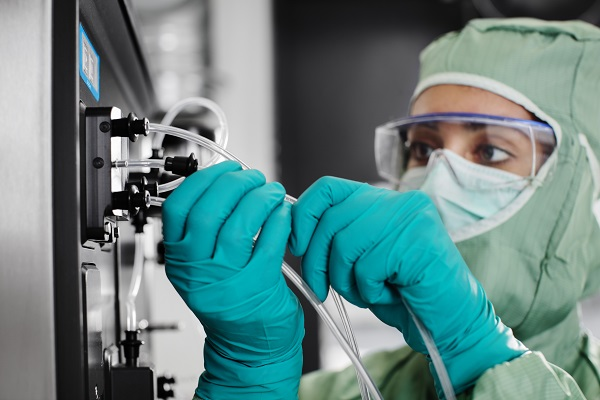How can you be one step ahead in process development and prepare for future GMP work? Learn what tech transfer experts say about this. And discover how to apply their approach to your process.
Determine target product profile early
Transfer from a non-GMP to a GMP environment is a resource-intensive step in biomanufacturing. As you are moving from late stages of process development to pilot production your process need to work as well in a regulated environment. There are, however, ways to make the transition less resource demanding.
Dr Alison Ward at ASLAN Pharmaceuticals in Singapore and Avril Vermunt, Bioprocess Hardware Specialist at Cytiva shared some tech transfer insights with me. The common theme was to start with the end in mind. It pays off to determine the target product profile (TPP) for your drug candidate as early as possible.
This approach will help guide you through the development. And it will let you focus on important product quality attributes. Interested in specific tips on how to use this approach to prepare for GMP work? Keep reading.
Control your raw materials
Raw materials are the essence of your process. So, they need to be suitable for GMP-regulated, large-scale manufacturing. Some things to control during process development to avoid problems when transferring to GMP work:
- Make sure all raw materials used in your process are available in biomanufacturing grade.
- Make sure raw materials are free from ingredients of animal origin. Also check for transmissible and bovine spongiform encephalopathy (TSE and BSE).
- Use water for injection (WFI) in the late stages of process development.
- Look at raw material costs and make balanced decisions to keep manufacturing costs to a minimum.
Remember manufacturing conditions
When working at lab scale it is easy to forget that conditions are more limited at manufacturing scale. Remember these three tips during process development:
- Make sure your protein is stable at room temperature.
- Use buffers that keep a constant pH independent of the room temperature variability of the manufacturing facility.
- Consider alternatives to storing chromatography columns in ethanol, as ethanol is sometimes not allowed in manufacturing plants (depending on local regulations).
Know your hardware
Regulatory agencies require the process design space to be defined and described. It is possible to define this design space applicable to multiple operation scales. Keep this in mind when it comes to hardware used in process development:
- Make use of vendor data available for the equipment used. As an example, check out this multidimensional scale-up study performed. It demonstrates 20-fold scaling from a lab-scale chromatography system and column up to an ÄKTA pilot 600 system and an AxiChrom 100 column.
- Simulate your sanitization procedure and try to resemble what it would be for the equipment used in the GMP setting.
Simplify tech transfer
There are also other ways to mitigate risks associated with consumables and equipment during transfer, like including products from a scalable platform. Staying within a product platform means you can easily move between scales. For transfer between non-GMP and GMP work, our latest chromatography system is a great example.
Experience how ÄKTA pilot 600 can help simplify transfer to GMP environments.
